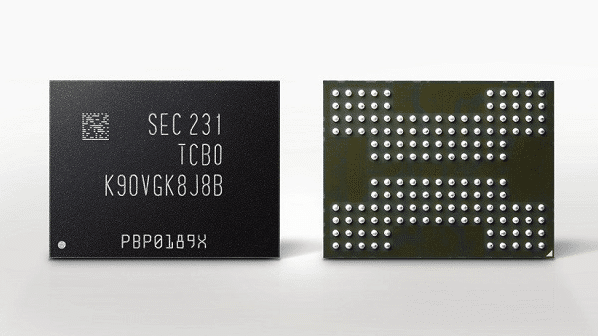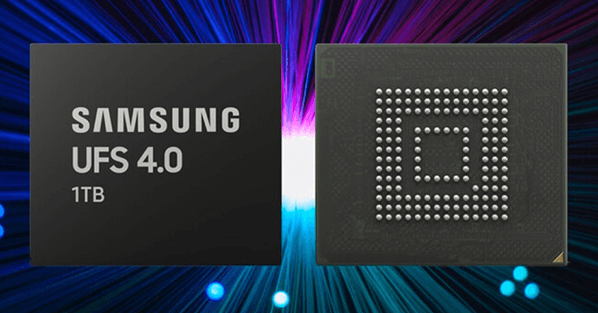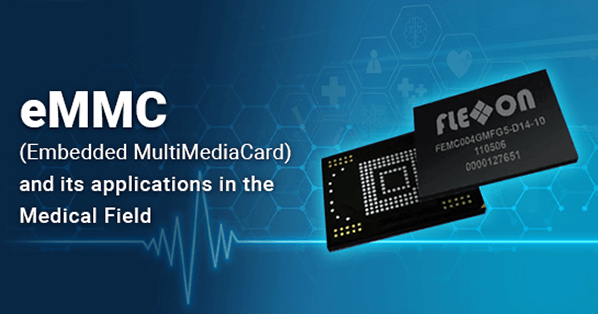Table of Contents
The choice of flash storage plays a crucial role in the overall performance and user experience of mobile devices. Three of the most commonly used flash storage options are NAND, UFS, and eMMC. Each has its advantages and disadvantages, which must be carefully considered when designing and manufacturing mobile devices.
Main Points
- NAND Flash Storage
- UFS Flash Storage
- eMMC Flash Storage
- Comparison of performance and speed
- Reliability and durability
- Cost and availability

Overview of NAND, UFS, and eMMC Flash Storage Technologies
NAND, UFS, and eMMC are three popular flash storage technologies used in electronic devices today. Each technology offers different performance and capabilities, making them suitable for different applications.
Critical differences between NAND, UFS, and eMMC:
- NAND: NAND flash storage is known for its high-speed data transfer and low power consumption. It is commonly used in solid-state drives (SSDs) and high-performance devices.
- UFS: Universal Flash Storage (UFS) is a newer technology offering faster data transfer speeds and improved reliability. It is commonly used in flagship smartphones and tablets.
- eMMC: Embedded MultiMediaCard (eMMC) is a cost-effective storage solution that offers moderate performance and is commonly used in budget-friendly smartphones, tablets, and other consumer electronics.
Grasping the nuances between these flash storage technologies is crucial. It empowers you to make informed decisions when designing and selecting the most suitable storage solution for specific devices and applications.
Performance Comparison of NAND, UFS, and eMMC in Mobile Devices
Regarding the performance of storage technologies in mobile devices, NAND, UFS, and eMMC are the three leading contenders. NAND, a type of flash memory, has been a staple in mobile devices for years. However, UFS (Universal Flash Storage) is quickly gaining traction for faster data transfer speeds and improved power efficiency. On the other hand, eMMC (embedded MultiMediaCard) is known for its cost-effectiveness but lags behind in performance compared to UFS and NAND.
In a performance comparison, UFS stands out with its high sequential read and write speeds, making it ideal for demanding applications and multitasking. Its advanced queuing mechanism and command protocols further contribute to its superior performance. Conversely, eMMC’s sequential read and write speeds are lower, resulting in slower loading times and data transfer rates. While it may be suitable for budget-friendly devices, it may not meet the demands of high-performance tasks.
Comparison Table:
| Storage Technology | Sequential Read Speed (MB/s) | Sequential Write Speed (MB/s) |
|---|---|---|
| NAND | Up to 550 | Up to 520 |
| UFS | Up to 900 | Up to 180 |
| eMMC | Up to 300 | Up to 90 |
While NAND, UFS, and eMMC each have their own strengths and weaknesses, UFS emerges as the frontrunner in terms of performance for modern mobile devices. Its faster data transfer speeds and improved power efficiency make it highly desirable for users who demand top-notch performance from their devices.
Reliability and Endurance of NAND, UFS, and eMMC Flash Storage
When it comes to choosing the right flash storage for your electronic devices, reliability and endurance are three key factors to consider. NAND, UFS, and eMMC flash storage technologies offer different levels of reliability and endurance, making it crucial to understand their differences.
NAND Flash Storage
NAND flash storage is known for its high reliability and endurance, making it ideal for applications requiring frequent read and write operations. Its ability to withstand numerous program/erase cycles makes it a popular choice for high-performance devices.
Power Efficiency and Battery Life Considerations for NAND, UFS, and eMMC
Power efficiency and battery life are key considerations when it comes to choosing the right storage solution for electronic devices. NAND, UFS, and eMMC are the three main types of flash storage options available in the market, each with its own advantages and disadvantages. In terms of power efficiency, NAND flash memory offers the lowest power consumption, making it ideal for mobile devices where battery life is crucial.
NAND
NAND flash memory is known for its high speed and low power consumption, making it suitable for smartphones, tablets, and other portable devices. Its power efficiency helps extend the battery life of these devices, providing a better user experience.

UFS
Universal Flash Storage (UFS) is a newer and more advanced storage technology that offers even higher performance and power efficiency compared to NAND. It is designed to meet the increasing demands of high-speed data processing and power-sensitive applications in mobile devices.

eMMC
eMMC, or embedded Multi-Media Card, is a popular choice for budget-friendly smartphones and entry-level devices. While it may not offer the same level of power efficiency as NAND or UFS, it still provides a good balance of performance and power consumption for affordable devices.

Ultimately, the choice between NAND, UFS, and eMMC depends on the specific requirements of the device and the desired balance between power efficiency and performance.
Security Features and Vulnerabilities of NAND, UFS, and eMMC Storage
When it comes to the security of NAND, UFS, and eMMC storage technologies, it’s crucial to understand the features and vulnerabilities they present. NAND flash memory, for example, offers high-speed data transfer and low power consumption, but it is also susceptible to data corruption and wear-leveling issues. UFS, on the other hand, provides advanced security features such as inline encryption and secure erase, but it may still be vulnerable to physical attacks. eMMC storage is known for its cost-effectiveness and reliability, but it lacks robust security measures, making it susceptible to unauthorized access and data breaches. Understanding the security features and vulnerabilities of these storage technologies is imperative for ensuring the integrity and confidentiality of stored data.
Cost Analysis of Implementing NAND, UFS, and eMMC in Mobile Devices
When it comes to choosing the right storage solution for mobile devices, it’s important to consider the cost implications of implementing NAND, UFS, and eMMC technologies. Each option comes with its own set of benefits and drawbacks, and conducting a thorough cost analysis can help manufacturers make informed decisions.
NAND
NAND flash memory offers high performance and reliability, but it comes with a higher price tag compared to other storage technologies. However, its longevity and speed may justify the added cost for high-end mobile devices.
UFS
Universal Flash Storage (UFS) provides a balance between speed and cost, making it a popular choice for mid-range smartphones. Its improved power efficiency also contributes to overall cost savings in the long run.
eMMC
Embedded MultiMediaCard (eMMC) is the most cost-effective option and is suitable for budget-friendly mobile devices. While it may not offer the same level of performance as NAND or UFS, its affordability makes it an attractive choice for entry-level smartphones.
| Storage Technology | Cost | Performance |
|---|---|---|
| NAND | High | Excellent |
| UFS | Moderate | Good |
| eMMC | Low | Fair |
Ultimately, the cost analysis of implementing NAND, UFS, and eMMC in mobile devices involves finding the right balance between performance and affordability to meet target consumers’ needs.
Future Trends and Developments in NAND, UFS, and eMMC Flash Storage Technology
As technology advances rapidly, the future of NAND, UFS, and eMMC flash storage technology is also evolving. Here are some key trends and developments to watch for:
- Increased Capacity:
The demand for larger storage capacity continues to grow, with data-intensive applications, such as artificial intelligence and IoT, driving the need for higher-capacity flash storage. Manufacturers are developing NAND flash with even greater storage capabilities to meet this demand.
- Faster Speeds:
Speed is crucial for the performance of modern devices. The industry is focused on improving flash storage’s read and write speeds, with UFS technology leading the way in achieving faster data transfer rates.
- Enhanced Reliability:
Reliability is a top priority for flash storage technology, especially in applications where data integrity is critical. Error correction and wear-leveling algorithms are being developed to enhance the reliability and lifespan of NAND, UFS, and eMMC flash storage.
Overall, the future of NAND, UFS, and eMMC flash storage technology looks promising, with continuous innovation driving the industry forward. Keep an eye on these trends as they shape the next generation of storage solutions.
Frequently Asked Questions
What is NAND?
NAND is flash memory technology used in solid-state drives (SSDs) and other storage devices.
What is UFS?
UFS (Universal Flash Storage) is a standard for high-end mobile devices and other applications.
What is eMMC?
eMMC (embedded MultiMediaCard) is a flash storage commonly used in mobile phones, tablets, and other embedded systems.
How does NAND differ from UFS and eMMC?
NAND, UFS, and eMMC are all types of flash memory, but they differ in performance, durability, and features. NAND is the underlying technology, while UFS and eMMC are specific implementations of NAND for different use cases.
What are the advantages of using NAND, UFS, or eMMC?
The advantages vary depending on the application, but generally, NAND, UFS, and eMMC offer high-speed data transfer, low power consumption, and small form factors, making them ideal for various devices.


